Mitosis is one kind of cell division that occurs in the somatic cells of the body. It produces two daughter cells in each division. The daughter cells have the same number of chromosomes as in mother cells. Therefore, the Haploid mother cell (n) will produce two haploid daughter cells (n) and a diploid mother cell (2n) will produce two diploid (2n) daughter cells.
Where does mitosis occur?
As mentioned above mitosis occurs in those cells, where the ploidy level needs to be constant both in mother and daughter cells. These types of cells include:
- Somatic cells of lower and higher organisms.
- Meristematic cells of the plant body. Such as apical meristem of root, stem, procambium tissues, etc.
In mitosis, there are two processes that occur periodically:
1. Karyokinesis
2. Cytokinesis
Karyokinesis (Division of the nucleus)
There are 5 phases in karyokinesis. They are as follows.
A) Prophase
It lasts about 50 minutes.
There are 3 sub-phases:
a) Early Prophase
1. At first the cells become almost round and the cytoplasm becomes viscous.
2. Dehydration of chromosomes happens.
3. Microtubules are arranged in spindle fiber.
Best safe and secure cloud storage with password protection
Get Envato Elements, Prime Video, Hotstar and Netflix For Free
Best Money Earning Website 100$ Day
#1 Top ranking article submission website
b) Middle Prophase
1. Chromosomes further get shorter and thicker.
2. On the other hand nucleolus progressively becomes smaller and finally disappears.
3. Also nuclear membrane begins to break down.

c) Late Prophase
1. Finally, the nuclear membrane breaks completely and releases the chromosomes.
2. Also spindles get their proper shape and size.
3. Then spindles and centriole pairs take a position to the poles.
B) Pro-metaphase
1. Here spindles get attached with centromeres.
2. Disappearance of nuclear membrane and nucleolus occurs.
3. Chromosomes are moving to and fro.
C) Metaphase
It lasts only 2-10 minutes.
1. The spindles occupy the region of the nucleus.
2. The chromosomes move to the equatorial region of the cell. Therefore, gets settled down there.
3. Each chromosome splits longitudinally except centromere.
4. Finally chromosomes are in maximum thickness and look short.
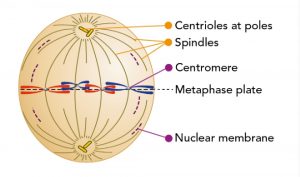
D) Anaphase
1. Finally the centrosomes are split by the contraction of spindle fiber coming from two opposite poles.
2. Because of the continuous contraction of the spindle, chromosomes get separated. In short, one set of daughter chromosomes move to one pole and another set to another pole.
3. On basis of the position of the centromere different chromosomes show different shapes.
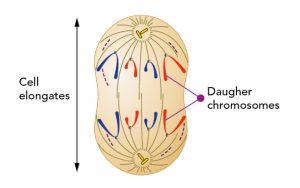
E) Telophase
1. Chromosomes become uncoiled at last.
2. Hydration of chromosomes occurs.
3. Appearance of nuclear membrane and nucleolus.
4. But chromatids become invisible.
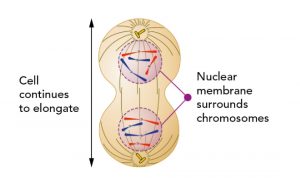
Cytokinesis (Division of cytoplasm)
Along with the cytoplasm, cellular organelles divide equally. Also, a cell plate between two newly formed cells appears. This cell plate is the divider that further divides one cell into two.
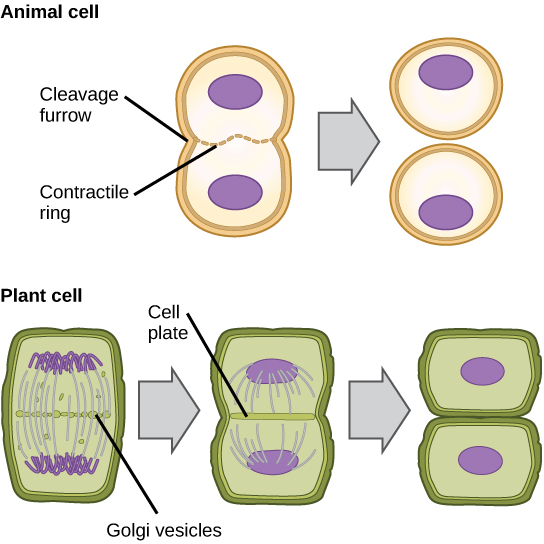
Written by
Fariha Tandra, B.S. (Hons), Department of Botany, University of Dhaka
Revised by
- Noushin Sharmili Suzana on 11 August, 2021.
- Noushin Sharmili Suzana on 13 August, 2021.
 Plantlet The Blogging Platform of Department of Botany, University of Dhaka
Plantlet The Blogging Platform of Department of Botany, University of Dhaka
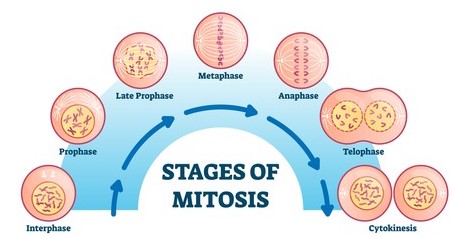

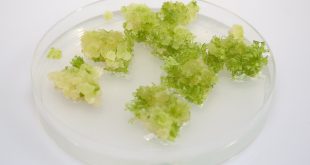
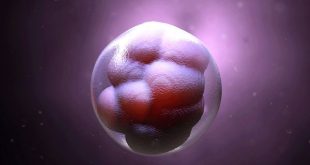
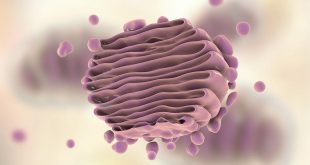
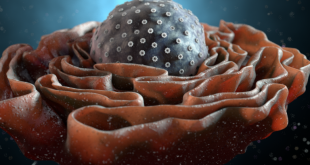
Short and Useful! Hope to see more from you.